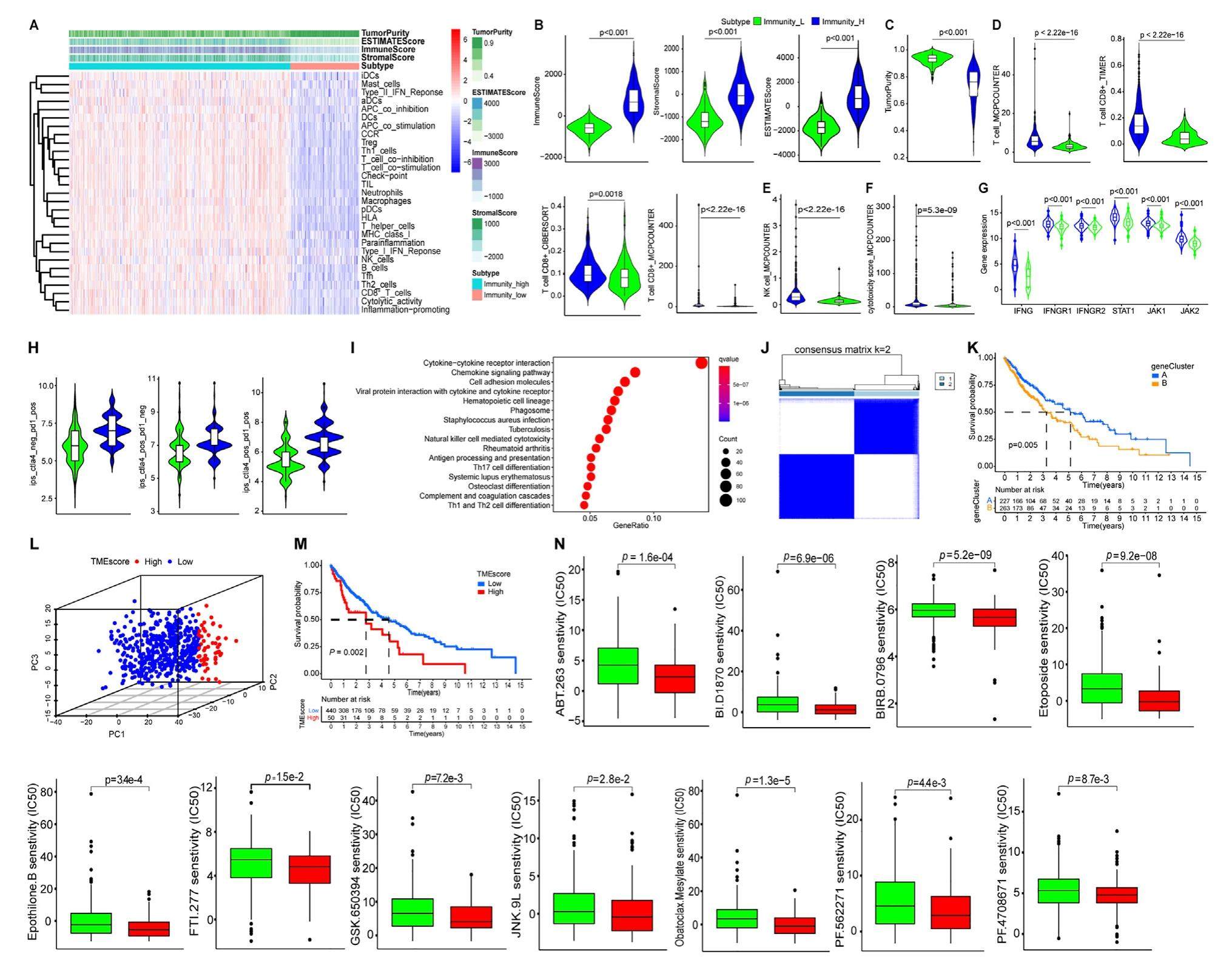
Immunogenomic classification of lung squamous cell carcinoma characterizes tumor immune microenvironment and predicts cancer therapy


Lung squamous cell carcinoma (LSCC) is the second most common histological type of non-small cell lung cancer (NSCLC) after lung adenocarcinoma, accounting for 30% of all NSCLC cases. Cytotoxic chemotherapy and radiotherapy are commonly used as adjuvant therapy following surgery for LSCC. Advanced and metastatic LSCC patients typically receive systematic therapy that consists of a platinumbased doublet. Rare mutations of two main oncogenic drivers (EGFR and KRAS) in LSCC hindered the development of molecular targeted therapies. Cancer immunotherapy based on anti-PD-1 (programmed cell death 1) /PD-L1/CTLA-4 (cytotoxicT-lymphocyte-associatedprotein4) therapies represents promising therapeutics for NSCLC patients, while obtained remission rate was unsatisfactory partly due to the heterogeneity of the tumor immune microenvironment (TIME). Therefore, comprehensive characterization of TIME in LSCC is vital to predict the responsiveness to immunotherapy and develop new effective therapies for LSCC.
